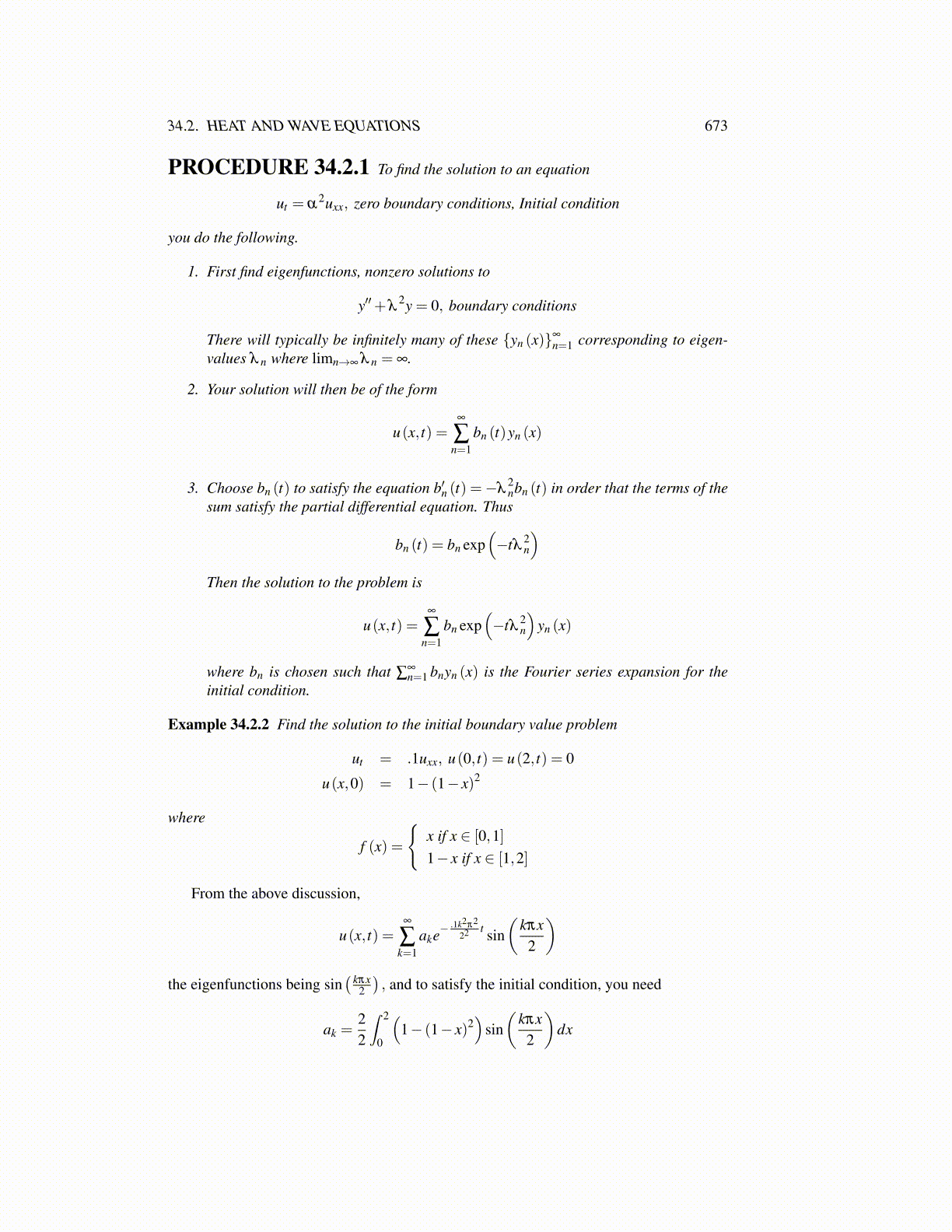
34.2. HEAT AND WAVE EQUATIONS 673
PROCEDURE 34.2.1 To find the solution to an equation
ut = α2uxx, zero boundary conditions, Initial condition
you do the following.
1. First find eigenfunctions, nonzero solutions to
y′′+λ2y = 0, boundary conditions
There will typically be infinitely many of these {yn (x)}∞
n=1 corresponding to eigen-values λ n where limn→∞ λ n = ∞.
2. Your solution will then be of the form
u(x, t) =∞
∑n=1
bn (t)yn (x)
3. Choose bn (t) to satisfy the equation b′n (t) =−λ2nbn (t) in order that the terms of the
sum satisfy the partial differential equation. Thus
bn (t) = bn exp(−tλ 2
n
)Then the solution to the problem is
u(x, t) =∞
∑n=1
bn exp(−tλ 2
n
)yn (x)
where bn is chosen such that ∑∞n=1 bnyn (x) is the Fourier series expansion for the
initial condition.
Example 34.2.2 Find the solution to the initial boundary value problem
ut = .1uxx, u(0, t) = u(2, t) = 0
u(x,0) = 1− (1− x)2
where
f (x) =
{x if x ∈ [0,1]1− x if x ∈ [1,2]
From the above discussion,
u(x, t) =∞
∑k=1
ake−.1k2π2
22 t sin(
kπx2
)the eigenfunctions being sin
( kπx2
), and to satisfy the initial condition, you need
ak =22
∫ 2
0
(1− (1− x)2
)sin(
kπx2
)dx